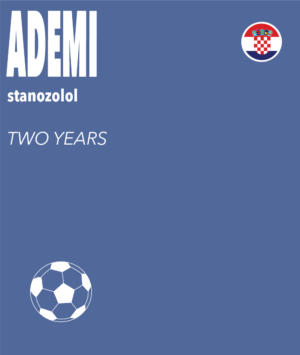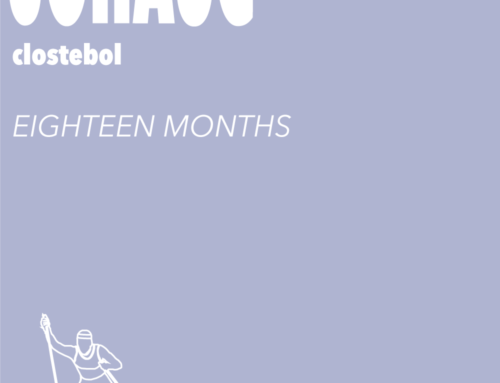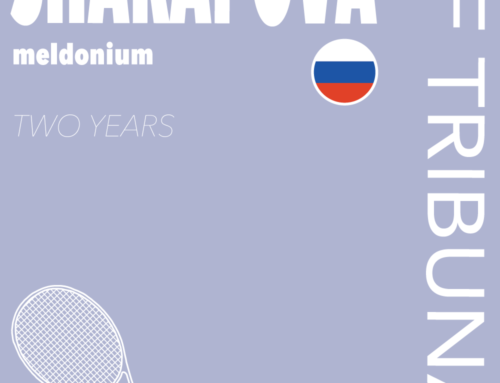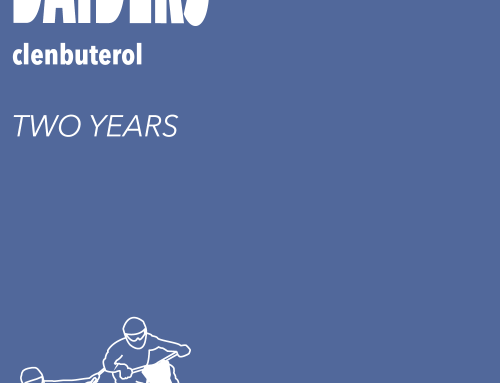CAS 2016/A/4676, Arijan Ademi v. UEFA, 24 March 2017.
In the Ademi award, the main issue in front of the CAS panel was whether the violation was ‘not intentional’, a question the panel had to resolve in absence of conclusive evidence as to how the substance entered the Athlete’s body. The award in essence asks: How much will CAS panels relax proof requirements to reach a finding that the violation was not committed intentionally? The case analysed below shows that CAS panels struggle to find a consistently fair test, without letting ‘intentional’ become the implicit default standard for non-Specified Substances.
A. Facts
In this case, a Croatian football player (the “Player”) returned an Adverse Analytical Finding for metabolites of Stanozolol, a substance prohibited at all times and not a Specified Substance. [1]
The Player alleged that the source of the substance in his system was a supplement called “Megamin” that he had started taking on the advice of a renowned Croatian physiotherapist, who also served as a coach and trainer, to help treat lower back pain he was experiencing as a result of a prior injury.[2] The Player bought the supplement directly from the physiotherapist, and checked with his club doctor, who confirmed that it had no Prohibited Substances on the label.[3]
In an attempt to prove that Megamin was the source of the substance, the Player sought numerous laboratory analyses, which yielded varying results. Upon notification of his positive result, the Player sent the supplements and vitamins declared on his Doping Control Form to be tested by the Croatian NADO, which eventually did not approve the request and returned the products to the Player.[4] The other laboratories, which accepted to test the Player’s supplements, came up with the following results: one confirmed the presence of Stanozolol in the supplements,[5] one found only “suspect peaks” but did not go so far as to confirm the presence of Stanozolol,[6] another did not detect Stanozolol,[7] another detected trace amounts in (perhaps) an equivalent Megamin product packaged in sealed blisters,[8] and still another found Stanozolol in only one of the two colours of capsules that were submitted for analysis.[9]
The Control, Ethics, and Disciplinary Body of UEFA first heard this matter, and imposed on the Player a four-year period of Ineligibility,[10] a decision confirmed on appeal by the UEFA Appeals Body.[11] The Player appealed this decision to the CAS.[12]
B. The merits of the dispute
The CAS panel addressed two main issues: Was the Player able to establish the violation was not intentional within the meaning of (the equivalent to) art. 10.2.3 of the 2015 World Anti-Doping Code (WADC)? (1.) If so, was the Player able to establish that the violation was committed with No (Significant) Fault or Negligence? (2.)
1. Was the violation not intentional?
Before reaching the conclusion that the Player’s violation was “not intentional” the CAS panel addressed the following preliminary issue: Is it necessary for the Player to establish the source of the substance in his Sample in order to establish that the violation was not intentional?
The Ademi panel weighed the factors for and against this issue. It listed the following factors in favour of the notion that establishing the source is not necessary: (i) No explicit mention of this requirement in the rules; (ii) It is explicitly mentioned elsewhere, which tends to show that its omission in the (equivalent to) Article 10.2.3 of the WADC was deliberate; (iii) Any ambiguous provision in a disciplinary code must be interpreted contra proferentem, especially when the provision aims to identify Athletes “who cheat”; (iv) It has been interpreted in legal doctrine as offering panels the “flexibility to examine all the objective and subjective circumstances of the case and decide if a finding that the a violation was not intentional is warranted,” even though the source of the substance is an “important, or even critical” element of the factual basis to establish an Athlete’s level of Fault.[13] For the factors supporting the notion that the source must be established to show “not intentional” the CAS panel listed the following: (i) It is not obvious how the CAS panel may arrive at a finding that the violation was not intentional in absence of establishing the source of the substance; (ii) it may be implicit in the provision that the source would be required, which is perhaps not the case for the provisions considering No (Significant) Fault or Negligence; (iii) CAS case law consistently requires the source be established to show an absence of fault “in order to ensure that one does not rely merely on speculation or matters which are entirely made up and which would undermine the strict liability rules,” this jurisprudence would logically apply mutatis mutandis to a case in which the absence of intent is at issue.[14]
On balance, the CAS panel reached the conclusion that it is not necessary to establish the source of the Prohibited Substance in an Athlete’s Sample to prove that the violation was “not intentional”.[15] First, the applicable Anti-Doping Rules “should be strictly construed without reference to case law which considered earlier versions where the earlier versions are inconsistent.”[16] Second, the relevant provisions do not explicitly require the source of the substance to be established, in contrast to other provisions in the sanctioning regime that do explicitly require this.[17] Finally, there can be situations where an Athlete’s “simple assertion” of innocence would be sufficient to convince a CAS panel that a violation was not intentional, even if this situation “may inevitably be extremely rare” in practice.[18]
This ruling of principle was particularly important in this case, since the CAS panel did not accept that the Player established the source of the Stanozolol in his Sample. It found that the various analyses conducted on the Pills were inconclusive,[19] a situation supported by the expert testimony at the hearing.[20] It did make the following observation[21]:
The Panel views this scenario (including the possibility that the Pills used were from an open container provided at the centre whether intended or not intended specifically for the Player but not necessarily manipulated by the Player) as more plausible than the alternative scenario put forward by UEFA of a plan masterminded by the Player under which he knowingly and intentionally used stanozolol and then manipulated the Pills and the other Megamin products tested by the various labs in order to try to prove contamination. The Panel notes that this would have required a well thought concentrated actions of manipulating the products through sealed blisters and quick action even before the sending of all products to the Croatian NADO which was indeed done without delay by the Club.
Even though it declared itself “unpersuaded” as to the source of the substance, the CAS panel was satisfied that the Player “did not engage in conduct which he knew constituted or might constitute or result in an ADRV, in that he did not knowingly ingest Stanozolol or otherwise intend to cheat”.[22] This conclusion was made considering the totality of the evidence, including the possibility that the pills at issue were contaminated, the Player’s credible testimony, and the supporting evidence presented by the physiotherapist who gave the Player the pills, and the club doctor.[23] This finding that the violation was “not intentional” meant that the Player would be subject to a maximum of 2 year (instead of 4) period of Ineligibiliy.
2. Was the violation committed with No (Significant) Fault or Negligence?
The CAS panel then addressed the issue of whether the Player could benefit from an elimination or further reduction of the two-year period of Ineligibility on the ground that he committed the violation without Fault or Negligence or without Significant Fault or Negligence.
The Panel rejected the Player’s argument that the violation was committed with No (Significant) Fault or Negligence. Its analysis consisted of two parts: First, assessing the Player’s degree of Fault, and second (re-)addressing the issue of whether the Player established the source of the Prohibited Substance in his Sample.[24]
Upon consideration the CAS panel first found that the Player’s conduct fell outside of the definition of No Significant Fault or Negligence. In the Player’s favour, the CAS panel listed the fact that he checked the product label, confirmed the absence of Prohibited Substances with the club doctor, and declared the supplements used (including Megamin) on his Doping Control Form.[25] Not in the Player’s favour, the CAS panel noted that the Player did not conduct an internet search, the product was not purchased from a “licensed pharmacy” or drug store but instead sourced directly from the Physiotherapist’s centre which “may be more susceptible than a pharmacy to lack of controls…and event to possible product manipulation”, the Player did not recall clearly procedures that he introduced to “ensure that the product was fully sealed and intact” testifying that he “probably took off the protective ring” but did not specifically recall, that the Player did not immediately cease to Use the product when he “noticed (or should have noticed) that the container had both yellow and white Pills”, and “the Player is a professional experienced international Player…and should have acted with a high degree of care”.[26] In reaching its conclusion that the Player did not act with No Significant Fault or Negligence, the CAS panel emphasized that the analysis requires an examination of the totality of the circumstances, which in this case included “the level of a professional Player purchasing a product from a non secure source and using a suspicious package and Pills” and “the use of stanozolol, a steroid which is notoriously used for doping and which is not allowed in and out of competition”.[27]
The CAS panel closed its analysis by re-emphasizing the Player’s failure to establish the source of the Stanozolol in his Sample, but this time appearing to find more likely that the source of the Prohibited Substance was manipulation rather than contamination. In reaching this conclusion, the CAS panel re-confirmed its finding that the various analyses were not conclusive, as well as noting that the “Player did not provide the receipt of purchase, did not conduct a thorough search with the manufacturer nor produce[] evidence from the manufacturer evidencing any possible contamination.”[28] It then made the following comment[29]:
Even if the source could seemingly be determined to be the Pills, the evidence is not sufficient to establish that this was due to contamination for the same reasons presented above. At the very least we would have expected evidence that any other Megamin pills have two different colous. Without further proof this is more likely to be the result of manipulation and not contamination
C. Comment
The question of whether establishing that a violation was not “intentional” according to the definition of (the equivalent of) Article 10.2.3 of the WADC requires an Athlete to establish the source of a Prohibited Substance in his or her Sample has emerged as a recurring question in CAS case law discussing the sanctioning regime in the 2015 WADC.
Initially, CAS panels appeared to take the view that Athletes must inevitably establish the source of the Prohibited Substance in their system in order to establish that a violation was not intentional.[30] The source of this conclusion would seem derived from the fact that the WADC explicitly requires an Athlete to establish how the Prohibited Substance entered his or her system in the context of a No (Significant) Fault or Negligence analysis,[31] a notion that has been supported by both the CAS and the Swiss Supreme Court on the ground that one fails to see how fault can be assessed if one does not know how the substance entered the body.[32] To our knowledge, the first in depth analysis of this question at the CAS took place in the recent Fiol award, in which a CAS panel eventually held that establishing the source of a Prohibited Substance was not an integral part of establishing that a violation was not intentional.[33] The Ademi CAS panel reproduced the reasoning offered in the Fiol case, also reaching the same conclusion.
While this conclusion appears well-founded, the manner the Ademi panel applied the notion of the “source of the substance” to the facts of the case throughout its reasoning appears more questionable. More particularly, the panel appeared to reach different conclusions as to the more likely source of the substance in different portions of its reasoning, a reality difficult to square with the role of the CAS panel as a fact-finder.
In its analysis of whether the violation was committed intentionally, the CAS panel considered the Athlete’s scenario in which the Stanozolol originated from the Megamin pills “even if not necessarily due to contamination and even if not meeting the burden of proving source for purposes of [the equivalent of Article 10.5 of the WADC]” was more plausible than the alternative scenario provided by UEFA, which was a plan masterminded by the player under which he knowingly and intentionally used Stanozolol and then manipulated the pills (which would have required “well thought concentrated actions of manipulating the products through sealed blisters and quick action even before the sending of all products to the Croatian NADO which was indeed done without delay by the Club”). Later in the award, in the context of its No Significant Fault or Negligence analysis, the CAS panel, upon noting the unexplained presence of two different coloured pills, said that “without further proof this existence of these two different coloured pills is more likely to be the result of manipulation and not contamination”, an observation that appears out of sync with its earlier comments about the unlikeliness of the manipulation scenario.
Reading the award, and without further insight, one gets the impression that the CAS panel was prepared to accept that the source of the Stanozolol in the Athlete’s system was from the pills offered by the physiotherapist, but was not ready to accept how the Stanozolol arrived to be in the pills. This even though the CAS panel did express reluctance to reach a conclusion in the matter, illustrated e.g. when it noted that “the source could seemingly be determined to be the Pills” (emphasis added). Nevertheless, the CAS panel performed its legal analysis based on this (hypothetical) fact, not only for the question of whether the violation was not intentional (e.g. “the Player merely used Pills provided by Dr. Vajda for back pains believing them to be safe to use”), but also for the question whether the violation was committed with No Significant Fault or Negligence (e.g. “the Player took Megamin, checked its label and confirmed that its listed ingredients did not include any prohibited substances”). This latest limb of the reasoning is particularly difficult to understand in the context of the constant CAS case law, and the explicit instructions in the 2015 WADC that an indispensable prerequisite of analyzing an Athlete’s degree of Fault in the context of a No Significant Fault or Negligence analysis is establishing the source of the Prohibited Substance.
If this were the case, one wonders whether a more straightforward solution would have been to accept that, on a balance of probability, the Stanozolol did originate from the pills, but not accept that the Stanozolol came to be present in the pills by contamination. In this way, the CAS panel could have at the same time reached the conclusion that the violation was not intentional, but determined that the details surrounding the contamination were not established with enough particularity to benefit from a reduction based on No Significant Fault or Negligence. As matters stand, one is left with the unfortunate impression that the CAS panel performed its analysis not on the facts it considered established (or not) based on the application of the burden and standard of proof – but on what it considered the most likely hypothetical scenario.
Overall, one wonders if the issue resting in between the lines of the CAS panel’s reasoning is a difficulty in reaching what might have been seen as the correct result (a two-year period of Ineligibility) within the constraints of the less flexible parameters of the 2015 WADC’s sanctioning regime. While there certainly appear to be – at least conceptual – drawbacks with the approach adopted by the Ademi panel, it does have the advantage of avoiding systematically imposing a four-year period of Ineligibility in cases in which the CAS panel genuinely believes that the Player did not intentionally Use a Prohibited Substance, but is short on evidence disproving this scenario.[34]
[1] Ademi CAS award at [6].
[2] Ademi CAS award at [60].
[3] Ademi CAS award at [60].
[4] Ademi CAS award at [59]. The Croatian NADO did send the vitamins and supplements to the WADA-accredited laboratory in Siebersdorf, Austria, but neither the Croatian NADO, nor UEFA authorized the laboratory to perform the analysis, thus they were not tested at this point.
[5] Ademi CAS award at [59]. Just before his initial hearing, the Player sent the products to the Croatian Veterinary Institute for analysis, which laboratory confirmed that one of the supplements (Megamin) was contaminated with Stanozolol.
[6] Ademi CAS award at [59]. For confirmation of the Croatian Veterinary Institute analysis, the Player then sent the supplements to a Dutch lab (RIKILT, “a National and EU Reference Laboratory in food safety research”), which detected “suspect peaks” for Stanozolol, but did not go so far as to confirm its presence in the Player’s supplements.
[7] Ademi CAS award at [59]. UEFA requested the analysis of two other of the involved supplements by the Cologne Laboratory, and the Player directed the Megamin supplements also sent there. The Cologne Laboratory did not identify Stanozolol in the (sealed) supplements.
[8] Ademi CAS award at [59]. the Player attempted to purchase Megamin from the same batch that he had consumed, but had difficulty identifying the exact information, so bought Megamin products that he believed were equivalent, this time in sealed blisters. These blisters were sent to both RIKILT labs, as well as an American lab (Aegis), both of which confirmed Stanozolol in low concentrations in some of the Megamin blisters.
[9] Ademi CAS award at [59]. The WADA-accredited Cologne laboratory conducted a post-hearing analysis, noting that the pills submitted included both yellow and white capsules, and Stanozolol was detected in all white capsules and none of the yellow capsules
[10] Ademi CAS award at [11].
[11] Ademi CAS award at [13].
[12] Ademi CAS award at [15].
[13] Ademi CAS award at [70] quoting Rigozzi A, Haas U, Wisnosky E, and Viret M, Breaking down the process for determining a basic sanction under the 2015 World Anti-Doping Code, International Sports Law Journal, 2 June 2015.
[14] Ademi CAS award at [71].
[15] Ademi CAS award at [72].
[16] Ademi CAS award at [72].
[17] Ademi CAS award at [72].
[18] Ademi CAS award at [72].
[19] Ademi CAS award at [73].
[20] Ademi CAS award at [78].
[21] Ademi CAS award at [77].
[22] Ademi CAS award at [75].
[23] Ademi CAS award at [76].
[24] Note that the sequence is surprising given that, establishing the source of the sanction is an explicit pre-requirement for such an elimination or reduction (Article 10.5).
[25] Ademi CAS award at [82].
[26] Ademi CAS award at [82].
[27] Ademi CAS award at [84].
[28] Ademi CAS award at [87].
[29] Ademi CAS award at [88].
[30] See eg CAS 2016/A/4377, WADA v. Alvarez, Award of 29 June 2016: “The Athlete bears the burden of establishing that the violation was not intentional within the above meaning, and it naturally follows that the athlete must also establish how the substance entered her body.”
[31] This instruction appears in the definitions of No Significant Fault or Negligence and No Fault or Negligence in Appendix 1 of the 2015 WADC, and according to the provision does not apply if the Athlete is a Minor.
[32] See, e.g., CAS 2010/A/2268, I. v. FIA, Award of 15 September 2011, para 124. See also, Swiss Supreme Court Decision (2007) Hondo v. WADA, 4P.148/2006, para 7.3.2.
[33] CAS 2016/A/4534, Mauricio Fiol Villanueva v. FINA, Award of 16 March 2017, paras 35–37.
[34] One recent CAS panel went so far as to interpret the 2015 WADC sanctioning regime as designed to assign this risk to the Athlete: “It is exactly this situation ‘in limbo’ that the applicable regulations wish to solve by attributing the risk that the true motive of the ingestion of a prohibited substance by athlete[s] cannot be ascertained to the latter.” CAS 2016/A/4707, Schwazer v. IAAF, Award of 30 January 2017, para. 102.







Leave A Comment